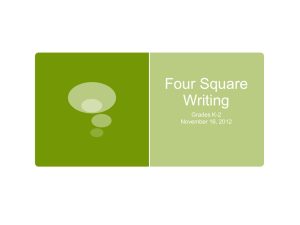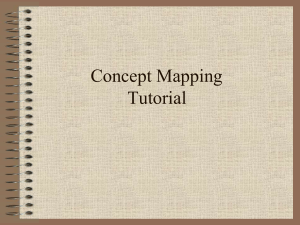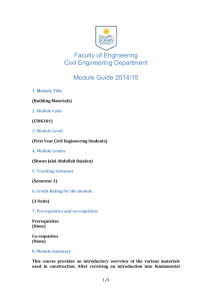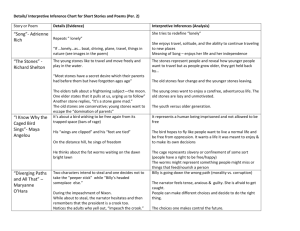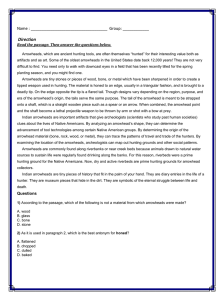Ash, Fal, Kel Toontastic Lesson Plan
advertisement
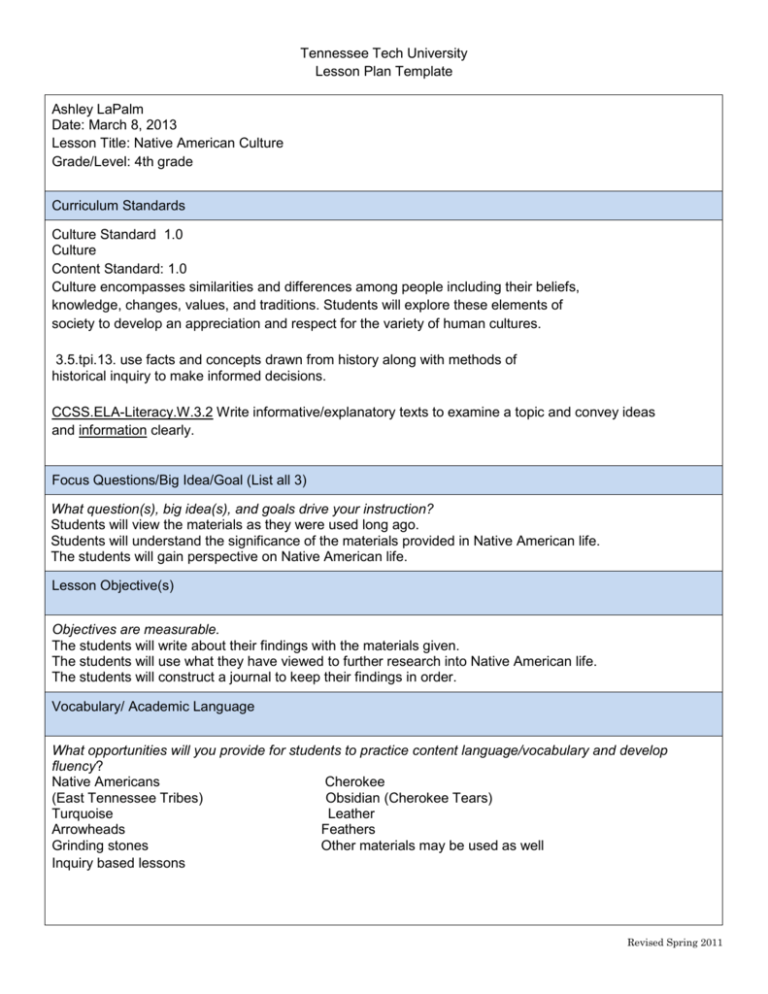
Tennessee Tech University Lesson Plan Template Ashley LaPalm Date: March 8, 2013 Lesson Title: Native American Culture Grade/Level: 4th grade Curriculum Standards Culture Standard 1.0 Culture Content Standard: 1.0 Culture encompasses similarities and differences among people including their beliefs, knowledge, changes, values, and traditions. Students will explore these elements of society to develop an appreciation and respect for the variety of human cultures. 3.5.tpi.13. use facts and concepts drawn from history along with methods of historical inquiry to make informed decisions. CCSS.ELA-Literacy.W.3.2 Write informative/explanatory texts to examine a topic and convey ideas and information clearly. Focus Questions/Big Idea/Goal (List all 3) What question(s), big idea(s), and goals drive your instruction? Students will view the materials as they were used long ago. Students will understand the significance of the materials provided in Native American life. The students will gain perspective on Native American life. Lesson Objective(s) Objectives are measurable. The students will write about their findings with the materials given. The students will use what they have viewed to further research into Native American life. The students will construct a journal to keep their findings in order. Vocabulary/ Academic Language What opportunities will you provide for students to practice content language/vocabulary and develop fluency? Native Americans Cherokee (East Tennessee Tribes) Obsidian (Cherokee Tears) Turquoise Leather Arrowheads Feathers Grinding stones Other materials may be used as well Inquiry based lessons Revised Spring 2011 Material/Resources What do you need for this lesson? ● Native American related materials (Turquoise, Arrowheads, Leather, Feathers, Grinding Stones,etc.) ● Paper and Pencils ● Possibly Curriculum textbook Assessment/Evaluation Formative: How will students demonstrate understanding of lesson objective(s)? How will you monitor and/or give feedback? After table discussion of materials in class, teacher will direct conversation to how the native Americans may have used the items. After brief informative lecture from teacher about items, students will lead more discussion on how they feel about the object now knowing its purpose. From this discussion students will write a paragraph on the item with its new found purpose being the focus. Summative: What evidence will you collect and how will it document student learning/mastery of lesson objective(s) Later in the unit the students will use all paragraph entries (this should continue for at least 1 week) to write a journal entry either from the perspective of a Native American adult or child. They will include these item terms in the journal as it will be written from the perspective of an every day tradition to use these items. Instruction (Include a suggested time for each major activity) List Questions for higher order thinking These cannot be answered by yes or no. (Identify Bloom’s Level of Thinking) Set/Motivator: How will you engage student interest in the content of the lesson? Use knowledge of students’ academic, social, and cultural characteristics. The teacher will have objects laid out on group tables. Teacher will not say anything about the items, but will allow students to discuss items with each other. During this portion of the lesson the teacher will not answer questions. What inferences can be made about these items? - Analyze Who do you think used these items? (Native Americans is not an acceptable answer here, looking for child, women, men, etc.) - Analyze 5 minutes Instructional Procedures/Learning Tasks: Provide specific How helpful were these items to the resources/details of lesson content and delivery. Native American people? - Evaluate After students have their “table talk” the teacher will begin with a How were the Native Americans able to set of questions prepared for the students. Teacher may use own collect and use these items? - Analyze research or videos to help explain what these items were used for. Closure: Verbalize or demonstrate learning or skill one more time. May state future learning. The students will be given a writing prompt. Students will be able to have approximately 10 minutes to write their paragraph about the item. How was the item used? –Remember Where can it be found (resources)? Remember What do you think would happen if they did not have access to these items? Analyze Adaptations to Meet Individual Needs: How will you adapt the instruction to meet the needs of individual students? Include ELL?; SPED?; Gardner’s Learning Styles - Name and specify what happens in the lesson that uses each learning style listed; Other individual needs of the students/class you are teaching? Students will be working in groups to help make assumptions on items Tactile- students will be able touch actual items. Revised Spring 2011 Visual- The students will view the table items. Audio- Discussion on items in small groups and as a whole class. Motor- The students will be able to tough the items, because items will be same for all tables movement around room is not necessary for this lesson. Management/Safety Issues: Are there any management and/or safety issues that need to be considered when teaching this lesson? The arrowheads or stones may be of some concern, but at a third grade level students should be expected to follow safety procedures. Rationale/Theoretical Reasoning: We are doing this in order for the students to get a hands on approach to the Native American culture. The group aspect of this is relevant to Vygotsky’s need for social development. The table talk promotes higher thinking and gives different perspectives from student to student. Also Gardner’s multiple intelligence promotes that hands-on inquiry is a great way to provoke higher order thinking. References: List the reference used in this lesson Obenchain, K.,& Morris, R. 50 social studies strategies for k-8 classrooms. (3rd ed.). Columbus, OH: Pearson/Merrill Prentice Hall. Reflections/Future Modifications: To what extent did the class learn what you intended them to learn? What will be your next steps instructionally? What did you learn about your students as learners? What have you learned about yourself as a teacher? Revised Spring 2011
